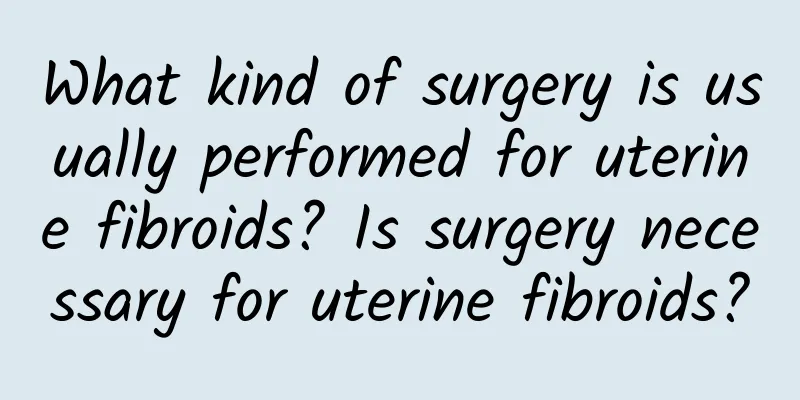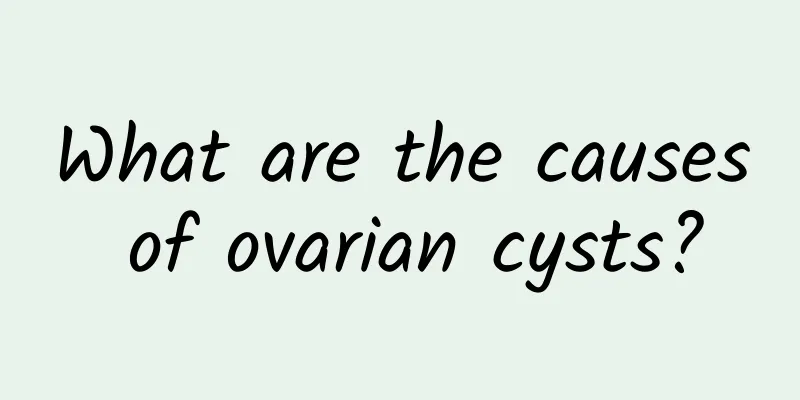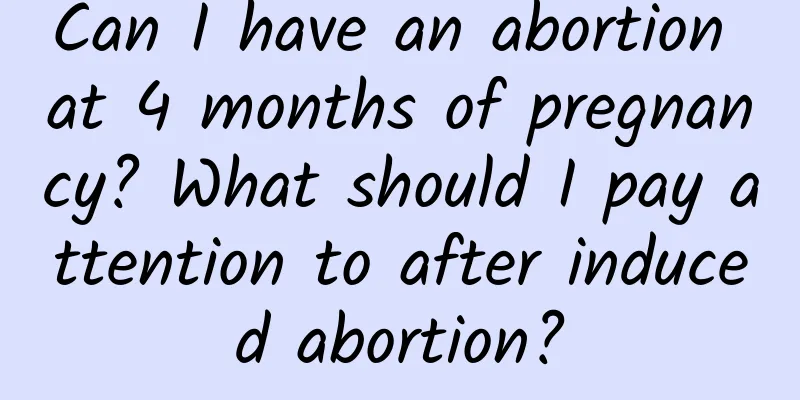What kind of surgery is usually performed for uterine fibroids? Is surgery necessary for uterine fibroids?

|
What kind of surgery is usually performed for uterine fibroids? Is surgery necessary for uterine fibroids? Uterine fibroids are common benign gynecological tumors that mostly occur in women of childbearing age. In order to diagnose and treat this disease, doctors usually recommend surgery. However, not all patients with uterine fibroids require surgical treatment. Next, we will explore the common types of uterine fibroid surgery and answer whether every patient needs surgery. 1. Types of surgery for uterine fibroids: a. Myomectomy: This is the most common surgical procedure and the preferred method for treating uterine fibroids. In this surgery, the doctor will remove the fibroids through laparoscopy or laparotomy, leaving the uterus intact. b. Cesarean section for uterine fibroids: For women who are planning to become pregnant, doctors may choose to perform a cesarean section and remove the fibroids at the same time. c. Hysterectomy: For patients with larger fibroids or those located under the endometrium, hysterectomy may be required. 2. Does every patient need surgery? Not all women with uterine fibroids require surgery. The factors that determine whether to undergo surgery are as follows: a. Severity of symptoms: If the fibroids cause significant symptoms such as pain, abnormal bleeding, frequent urination, etc., surgery may be necessary. b. Fibroid size: If the fibroid is large, larger than 5 cm or begins to press on other organs, your doctor may recommend surgery. c. Age and fertility plan: For young women who are not pregnant, fibroid surgery may be postponed and the uterus may be preserved as much as possible to ensure fertility. d. Physical examination results: If pathological examination shows that the tumor may be malignant, surgery is necessary. 3. Other treatment options: Although surgery is the most common treatment for uterine fibroids, there are other nonsurgical treatment options: a. Drug treatment: Drugs can help control the growth of uterine fibroids and relieve symptoms. Commonly used drugs include oral contraceptives and traditional Chinese medicine. b. Hormone therapy: Hormone therapy can reduce the size of uterine fibroids and relieve related symptoms, but it will not provide a permanent cure. c. Focused ultrasound therapy: This is a non-invasive treatment method that destroys fibroid tissue through high-energy sound waves. In summary, uterine fibroids are generally removed by surgery. However, not all patients require surgical treatment. For those with mild symptoms and small fibroids, medication or other non-surgical methods can be chosen. The decision on whether to have surgery requires a comprehensive consideration of multiple factors such as the condition, age, and fertility plan. Therefore, each patient's situation requires a comprehensive evaluation by the doctor to develop the most suitable treatment plan. |
<<: What can menopausal women with uterine fibroids eat?
Recommend
Eat egg yolks with confidence to lose weight and lower cholesterol! How many can you eat a day? The answer from Dr. Weight Loss is…
Many people probably have a concept: the choleste...
The paper girl has not had menstruation for 3 years! Doctor: Losing more weight may lead to infertility
A 25-year-old lady who is as thin as a "pape...
What are the clinical manifestations of vaginitis?
In recent years, with the increasing incidence of...
How many of these five behaviors that harm your uterus do you encounter? Come and have a look!
External maintenance is a course that fairies lea...
Here is what is the best time to have an abortion?
If you do not want to give birth to the child aft...
What are the causes of cervical erosion? Introduction to 6 causes of cervical erosion
The pace of modern life is getting faster and fas...
Does medical abortion require hospitalization? What preparations should be made before medical abortion?
Women need to check their bodies before medical a...
If you have adnexitis, you will usually have back pain.
Adnexitis usually causes back pain. If you always...
Different degrees of cervicitis have different treatment methods
Different degrees of cervicitis have different tr...
Burn belly fat! Just eat oatmeal and drink green tea
Do you have a protruding belly that makes you tak...
Can patients with uterine effusion get pregnant?
Can patients with uterine effusion get pregnant? ...
Can I drink alcohol during a miscarriage? See what the doctor says
Drinking alcohol within one month after abortion ...
Causes of Trichomonas vaginitis
Trichomonas vaginitis is relatively common in cli...
Can I eat chocolate if I have dysmenorrhea? It is not advisable to eat too much
Women love chocolate very much, and it can also r...
Can microwave treatment be used to treat cervical erosion during breastfeeding?
Can cervical erosion be treated with microwaves d...









